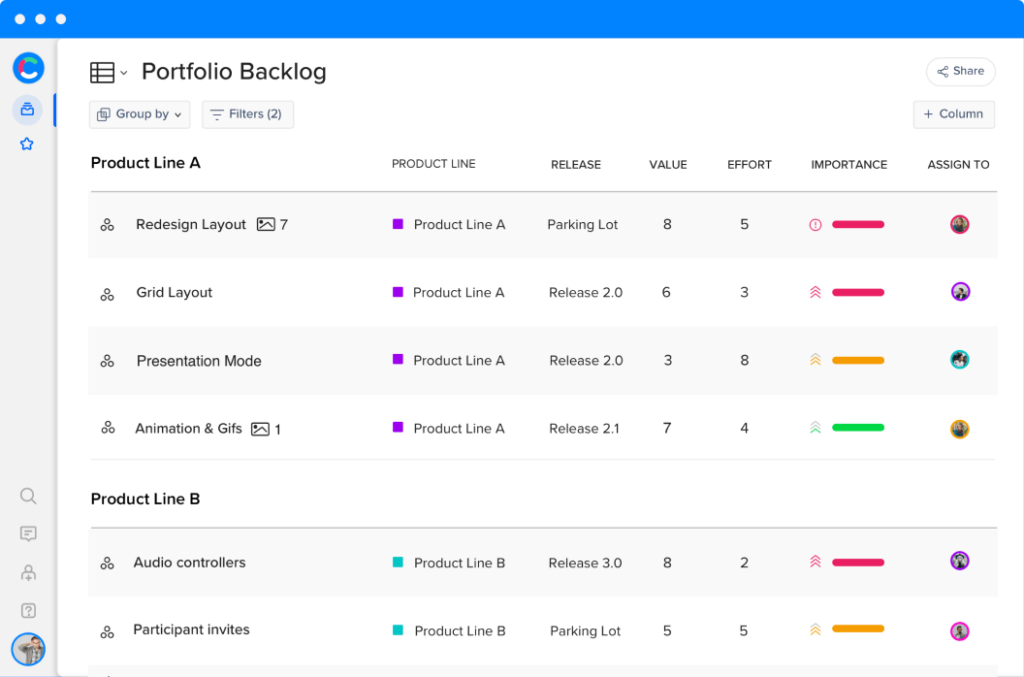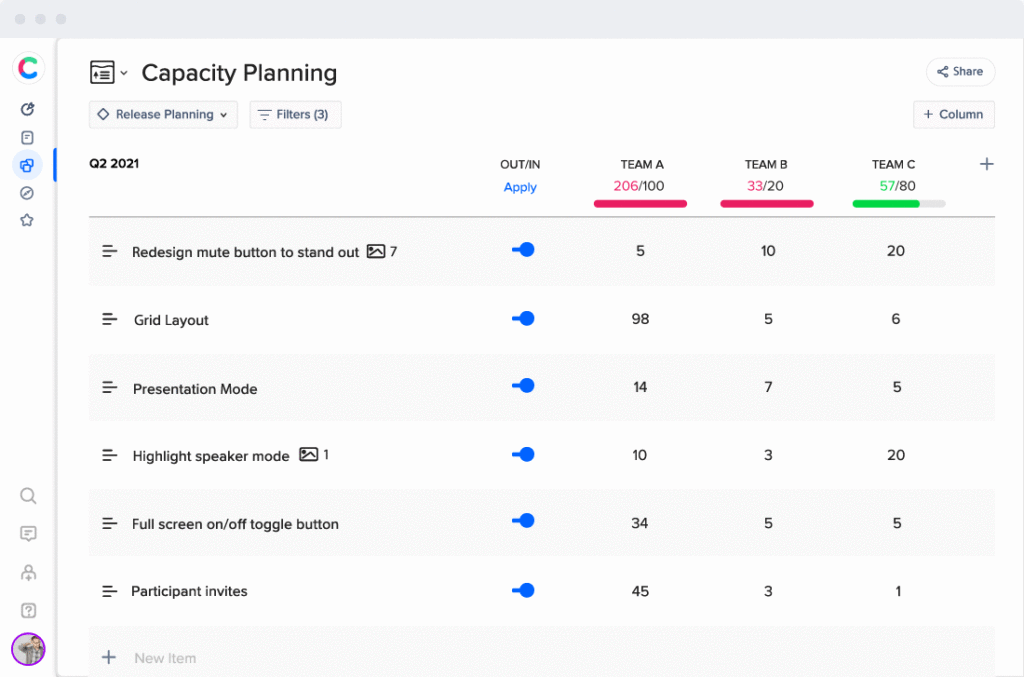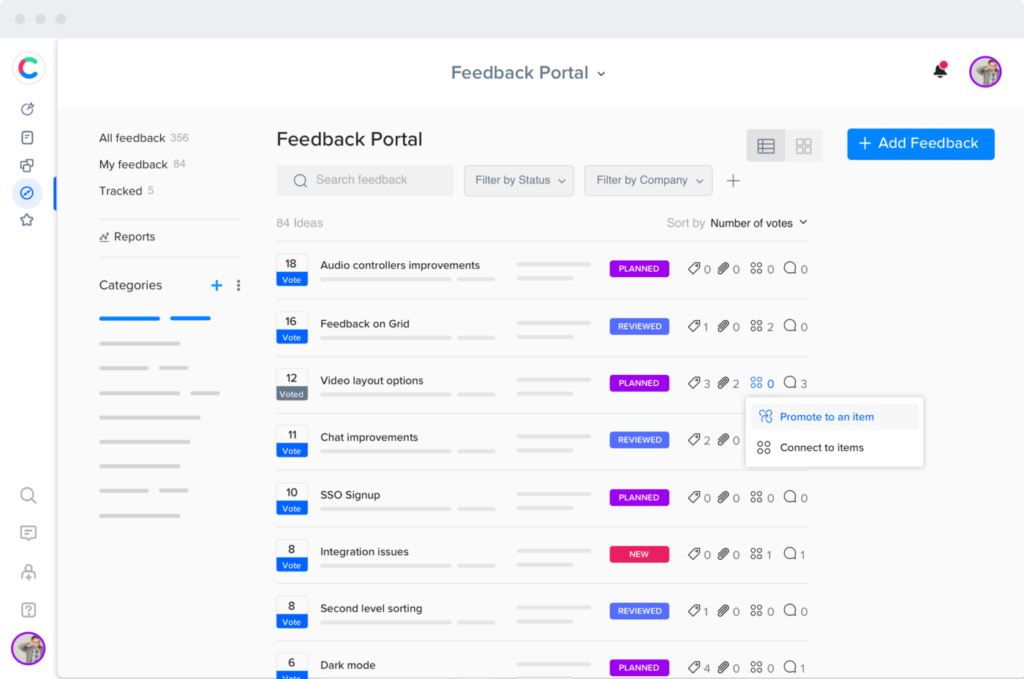Home > Blog > Is the Scaled Agile Framework (SAFe) Even Possible?
Is the Scaled Agile Framework (SAFe) Even Possible?

Agile at Scale? How Would That Work?
The Scaled Agile Framework, or SAFe, might sound like a contradiction in terms.
The agile methodology for software development is designed to help companies operate nimbly — without being slowed down by processes or constrained by a rigid plan — so that they can deliver value to customers more quickly and efficiently.
But what happens when a small, agile company grows into a large enterprise? What happens when one Product Manager becomes 23 Product Managers, collectively coordinating work on dozens of products — many with interdependencies — and working with a department of 500 developers?
At that scale, with that many moving and interconnected parts, can a product organization continue to operate with the same light-footedness and agility? Won’t some degree of process and documentation become necessary?
For example, here’s one of the 12 Principles of the Agile Manifesto: “The best architectures, requirements, and designs emerge from self-organizing teams.” That sounds like a theory worth testing for a startup, or a small company offering a few products. But can a large enterprise afford to allow “self-organizing teams” to run dozens of interdependent projects using their own approaches and timelines?
In this post, we’ll discuss the Scaled Agile Framework, its strengths and weaknesses, and why under the right circumstances, yes, it can help increase your organization’s chances of product success — but it won’t be an easy feat.
What Is the Scaled Agile Framework (SAFe)?
The Scaled Agile Framework is a group of principles and best practices designed to help enterprises implement the agile methodology across large teams — so they can create and release quality products more quickly and efficiently.
SAFe incorporates strategies and processes from other development frameworks, including Kanban, Scrum, and Lean. And like the standard agile methodology used by smaller organizations, SAFe limits its guidance to these principles and best practices; the framework does not demand users follow a rigid, step-by-step process.
In fact, this is the key source of debate about the Scaled Agile Framework. Critics say its list of principles is too restrictive, while its advocates argue that SAFe encourages only adherence to these high-level principles and leaves each organization to define its own process for development and project management.
Let’s examine these best practices now.
The 10 Principles of SAFe
The SAFe approach is built on 10 principles that incorporate both the agile philosophy in general and, more specifically, the Lean approach to agile — which focuses on helping teams improve efficiency by reducing waste. Here are the 10 principles of SAFe:
1. Take an economic view
Viewing the enterprise’s efforts through an economic lens means, for example, understanding that all decisions and priorities involve trade-offs, and learning to operate within lean budgets.
2. Apply systems thinking
This principle asks teams and their leaders to view their work in the larger context of systems: the product they’re building is a system, the company and its teams represent a system, etc. This gives teams greater insights into where they’re adding value, which projects should be prioritized because of their contributions to broader value, etc.
3. Assume variability; preserve options
Although human nature seeks clear paths and certainty, this principle suggests that product teams need to become comfortable working with uncertainty. This includes leaving their design and development options open for as long as possible to allow for new information regarding the best ways technically or economically to deliver the product.
4. Build incrementally with fast, integrated learning cycles
This principle points out that in the traditional, waterfall development approach, costs accrue immediately and nonstop until the team delivers the solution to the market. At the same time, the organization derives little or no value in that time. With the SAFe approach (and agile in general), the company pushes out the product to the market quickly, learns from users — which generates value — and continuously improves the product for the customer.
5. Base milestones on objective evaluation of working systems
Rather than sticking to fixed, linear milestones set in advance — discovery, requirements, design, test, delivery — this principle suggests basing milestones on evidence, and subjecting each phase to the entire process above (discovery, requirements, etc.) to ensure it justifies continued work and resources.
6. Visualize and limit work in progress, reduce batch sizes, and manage queue lengths
This is another principle built directly on the agile philosophy — encouraging organizations to hyper-focus on a smaller set of projects at any given time. The goal is to help these teams achieve a state of continuous flow, allowing them to quickly move new products or functionality from concept to revenue.
7. Apply cadence, synchronize with cross-domain planning
This principle suggests an enterprise establish a safety zone — which allows both a degree of freedom for innovation, as well as an agreed-upon development cadence and other processes to ensure the team always knows where it stands.
8. Unlock the intrinsic motivation of knowledge workers
Agile encourages organizations to empower the professionals who work for them — coders, designers, Product Managers — to innovate, problem-solve, and deliver their best. Managers can unlock their teams’ intrinsic motivation, for example, by providing them trust and autonomy, offering competitive compensation, and communicating the larger strategic purpose these workers are delivering.
9. Decentralize decision-making
To deliver value as quickly and efficiently as possible, a team needs the freedom to make decisions on the fly — and without needing to request and wait for managerial approval. This principle states that, while some decisions in a large enterprise need to be centralized — for example, those decisions that could have an impact beyond the teams and projects involved. But the vast majority of decisions teams encounter daily should be left to their best judgment.
10. Organize around value
This final principle focuses on the need for large enterprises to fight the natural tendencies to allow organizational hierarchies and bureaucratic management processes to overwhelm entrepreneurial thinking and nimble productivity. Instead, these organizations should focus on what SAFe calls development value streams, agile release trains (ARTs), and agile teams that can directly deliver value.
The unifying theme among all 10 of these SAFe principles is simple: Help large organizations reap the many benefits of agile — efficiency, alignment, continuous improvement, customer centricity, etc. — even as their teams and the complexity of their organizations grow.
Learn more:
Agile Development Best Practices
Benefits of the Scaled Agile Framework
Some of the commonly cited advantages of implementing SAFe include:
1. Faster delivery
When large organizations implement SAFe properly, they increase alignment, communication, and the synchronization of work across many teams and projects.
This often has the effect of helping the organization release quality products to the market more quickly — particularly when these disparate teams’ projects have interdependencies, and they might not have otherwise been communicating as closely with each other.
2. Increased customer-centricity
Implementing the SAFe framework can help an organization focus its processes and priorities through the lens of delivering value to the customer.
To take just one example, consider Principle #4 above: Build incrementally with fast, integrated learning cycles. The “learning” in those learning cycles comes largely from the market itself — meaning customers. SAFe, like all forms of agile, encourages teams to put new functionality into the hands of users as soon as possible — and to let those users’ reactions to the new functionality inform the team’s next iteration of the product.
3. Synchronization of enterprise goals
As a company grows, teams throughout the organization can easily become focused on their own internal objectives, milestones, and metrics for success. To keep a large enterprise steering in one strategic direction is difficult.
SAFe can help with this — knocking down silos and helping even large, distributed teams stay aligned around a shared set of organizational goals.
Drawbacks of the Scaled Agile Framework
As widely used and respected as SAFe has become, the framework also has its critics. Here are a few of the common complaints of the Scaled Agile Framework:
1. Too much oversight
Some teams interested in the agile methodology worry that SAFe puts too much emphasis on top-down management — which can undermine key benefits and efficiencies of the broader agile approach.
This is the inherent conflict we discussed in the introduction: Agile wants to free teams from processes and rules so they can do their best work in as short a timeframe as possible. But at scale — when a “team” becomes 100 Product Managers and 1,000 developers — an organization needs at least some process and some rules to keep its many complex projects and interdependencies coordinated.
2. Too much planning
Because the framework involves pulling together large numbers of teams and projects across an enterprise, SAFe often requires more upfront planning and more fixed roles than traditional agile encourages.
Like the “too much oversight” concern above, this is a subjective issue. Your organization might find longer planning cycles necessary and even valuable because you need to coordinate so many people across such a diverse set of teams and skill sets.
3. Resistance to change
This drawback isn’t specific to SAFe, but it’s worth keeping in mind. Anytime an organization seeks to implement a major change in culture, the company will face some resistance from individuals and teams who have grown comfortable with their current processes.
One key to overcoming this natural resistance will be to make sure your team has the right tools to make the transition to SAFe — and your teams’ day-to-day work under the new framework — as easy and enjoyable as possible.
And that brings us to our final section.
Why the Right Tool Is Essential for Scaled Agile Framework
Pulling together siloed teams across your organization, all working on different products and using different processes, is going to be a challenging task. But it will be far less difficult if you can support this transformation with the right software solution.
For SAFe implementation, that solution is an end-to-end product management hub capable of scaling infinitely and help all your managers, teams, and individual contributors align their efforts companywide (even if your company has thousands of employees) and deliver their best work. Here are just a few examples.
1. Portfolio-level management
The ability to view work company-wide at the portfolio level — including the status of every initiative, team, line of business, and product group. The portfolio management engine even lets you identify and monitor all dependencies across products and teams.

2. Capacity planning
The ability to quickly view capacity levels across your organization — and just as easily to preview how adding or removing tasks to a specific team could impact that team’s workload.

3. Centralized feedback management
A centralized hub to collect, analyze, and share user feedback across your products, features, surveys, and campaigns. With the SAFe framework in place, you’ll benefit from sharing learnings across products and teams about where customers are finding value and what features they’d like added. A centralized, intuitive feedback portal will go a long way to unlocking those learnings.

Yes, SAFe Can Work — If You Implement it Right and Use the Right Tools
To return to our original question, yes, the Scaled Agile Framework can be a viable approach for your organization’s product development and delivery.
Despite the inherent conflict — agile aims to free teams as much as possible from processes, but SAFe imposes some — many large enterprises have reported tremendous improvements after implementing SAFe. Case studies worth reviewing include Cisco’s success with SAFe as well as Air France’s efficiency gains after deploying SAFe.
But to reap the efficiency, productivity, and product-quality benefits of SAFe, your organization will need to be strategic about how you roll out this framework. That includes following the principles above, studying the stories of companies that have had success with SAFe (you’ll find more SAFe success stories here), and making sure you have the right tools—like craft.io—to unite stakeholders across your company.


